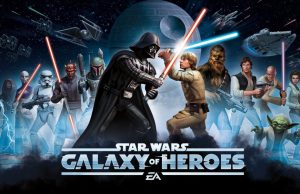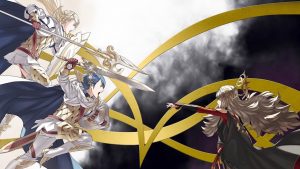It’s close to that time of year when everyone in the industry gets ready to take a plane halfway around the world to meet the gaming community at GDC 2018. Personally speaking, it’s one of the only times I see half of my ex-colleagues each year.
It goes without saying that GDC is a very special industry-focused event, not only because it’s the largest, but also because of the sheer density of great game designers and developers who make the trip. Without fail, each year will throw up something new – a new lesson, or a new contact who proves to be invaluable over time.
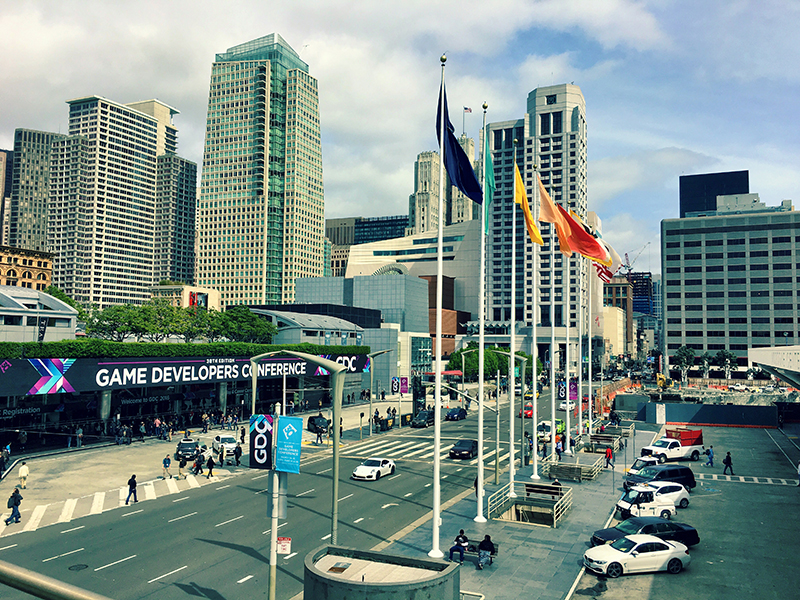
If you’ve never considered attending GDC before, I couldn’t recommend it any more strongly – it’s easily one of the best games events on the calendar, though the expense required for non-American developers to make the trip cannot be ignored. On that note, try and look into your country’s business investment initiatives, as there may be a budget to get you a ticket, flight or hotel.
For those heading to San Francisco for this year’s she-bang, both I and Adam will be giving two separate talks on topics we’re both passionate about:
GDC Talks
Speaker:
Tom Kinniburgh (Director, Mobile Free to Play)
Location: Room 2006, West Hall
Date: Thursday, March 22
Time: 4:00pm – 5:00pm
In this talk, I’ll be looking through how you can get the best data about your game for the lowest cost. Soft launching is something I believe helps every game improve, but how to do it, when to do it and the costs involve put off a large number of developers. I’ll show how, for $2000, you can get any game ready for a more successful launch on the app stores.
Speakers:
Adam Telfer (Director, MobileFreeToPlay.com)
Anil Das-Gupta (Product Owner, Wargaming.net)
Location: Room 22, North Hall
Date: Wednesday, March 21
Time: 2:00pm – 3:00pm
In this talk Adam and Anil will break down some of the top grossing games on the app store – you’ll have to wait and see which ones they both pick. Deconstructing games is what we do best. We’ll show you how the best performing games create strong core loops and through understanding, you can make better calls in your game.
Mobile Masters Meet Up – GDC 2018
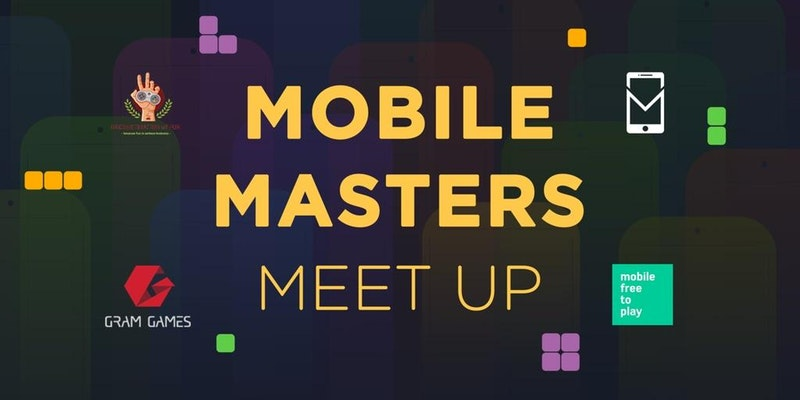
We’re also throwing an invite-only party with Gram Games, MobileDevMemo and Deconstructor of fun. There are really limited spaces and we’re focussing on letting Game Designer and Product Managers in, to meet with other talented folks! Get yourselves on the waiting list and we will be inviting a few people each day.
https://www.eventbrite.co.uk/e/gdc-mobile-masters-meet-up-tickets-43356218617
Hope to see you all there!
Tips for GDC
If it’s your first time to GDC it can seem a little daunting and you can often get lost in the sheer size and scale of the place. Here are my tips.
- Reach out and book meetings early with key individuals. Give yourself 60-minute slots, but only expect to have 30-minute meetings – often traveling to various locations takes the extra time.
- When booking meetings, book around Yerba Buena Gardens or any of the bars or hotels directly next to the Moscone Centre.
- You don’t need to stay near Moscone (nor is it always the safest). You can easily stay farther away at a more affordable venue and commute using the BART or Uber/Lyft. Once you’re in, you’re then in town for the full day and night.
- Work out which talks you want to see in advance and don’t expect to be able to do more than three back to back, they do get quite tiring.
- The Expo hall is a must – make sure you see the indie game finalists.
- Parties are top priority – make sure you try to go to two or three during the week, even if you don’t yourself drink. The best resources for finding them are
- Fellowship of GDC Parties FB Group
- GDC 2018 Party Map
- Don’t party all night. It’s a full week, slow and steady wins the race.
- Bring a bag with a jacket, water, gum, notepad/iPad. The venue doesn’t have great options, and SF weather is very temperamental.
- Don’t wander alone at night. Every year someone at GDC gets into problems wandering alone, especially near the Tenderloin. Stick to groups and take Lyfts/Ubers at night to get home.
- Don’t be shy! If you loved a talk, make sure to go and meet the speaker! If you see someone you admire, talk to them! GDC brings out the best in everyone. You’ll be surprised who is there and who is willing to have a quick chat.
And remember all of the talks are on the GDC Vault after the event and we will be posting both of our slide up here if you can’t make it to GDC this year.
Good luck, and I hope to see many of you out there.
You may have missed it. Over the easter long weekend, starting on April 14th, a new contender took the #1 Top Grossing spot in the United States: Dragon Ball Z Dokkan Battle. Moving aside games like Pokemon Go, Clash Royale and Game of War from their usual top spots.
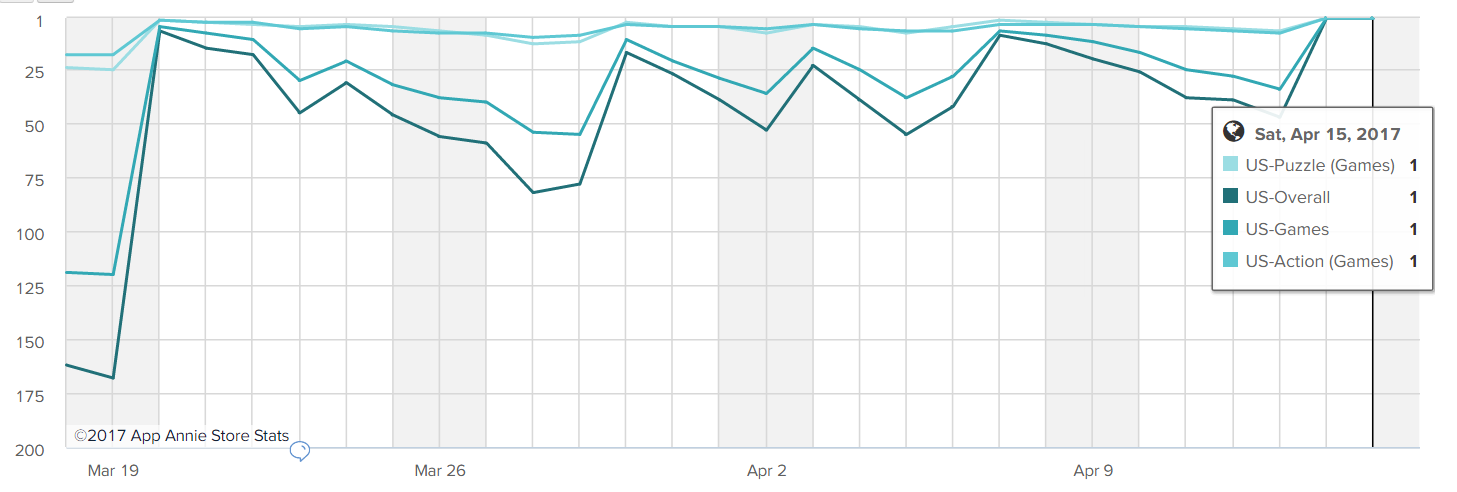
This can’t have been easy. Top game developers know the importance of holiday long weekends. A time of year when many players find themselves with extra time to play games. Many games advertise big events to create higher engagement and maximise revenue. Most games show spikes in their revenue at this time of year when they push big events for holidays. Games like Pokemon Go even had major Apple featuring with their easter event:
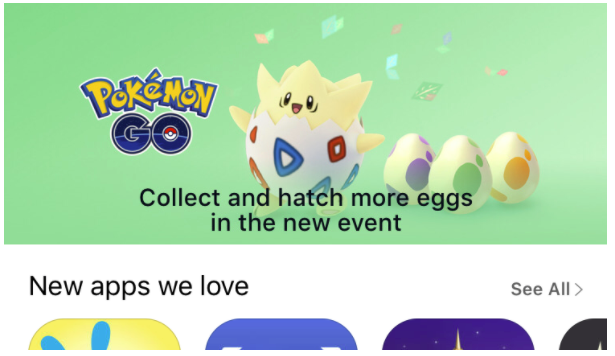
So how did Dokkan Battle do it? How did they manage to push aside Supercell, Nintendo and Machine Zone’s holiday events and become the #1 top grossing game?
It came down to 3 reasons why
- Monetizing Core: A strong gacha-based system which drives monetization
- Driving Desire: tie-ins to the IP, community building, and rare desirable content
- Sales Design: well-timed sales surrounding the event driving players to convert multiple times
#1 Monetizing Core
If you haven’t played the game, it is a Gacha-based RPG Fighting game using the Dragon Ball Z license. Developed by BANDAI NAMCO, the game is actually 3 separate games: one released in Japan ( ドラゴンボールZ ドッカンバトル) one in China ( 龙珠激斗) and one Globally, for all other countries.
The game loops are designed similar to Summoner’s War, Fire Emblem Heroes, Star Wars Galaxy of Heroes, Heroes’ Charge and various other Gacha-based RPG Games on mobile. For more on how those games work, check out our deconstructions here.
Where Dragon Ball Z adjusts the formula is in the core gameplay. Instead of a standard turn-based RPG, they opted for something completely different. The game board pulls from puzzle RPG games by having a board you manipulate to deal damage (similar to Puzzles & Empires and Puzzle Quest).
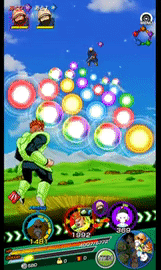
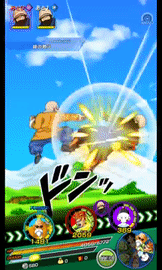
In the core battle, your focus is on charging your character by collecting Ki (energy). If you collect enough Ki you will launch a super attack, a vastly more damaging and visually impressive assault with iconic moves. The board works with a path system: selecting an orb at the bottom connects with its own colour as it moves towards your opponent granting additional Ki. Additionally, matching your character’s type with orb colour yields double energy. In the example below, my hero type is red, so I want to select red balls.
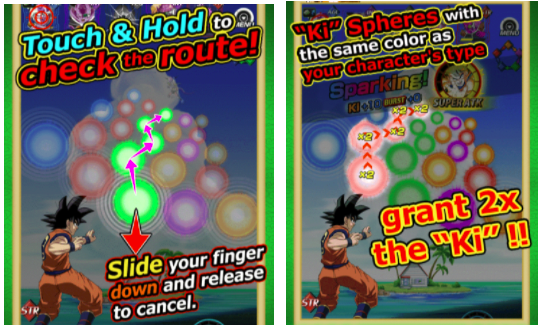
While the core gameplay interaction is simple, the strategy in who you bring into the battle is where the depth comes in. The strategy comes into choosing heroes which synergize the best with each other. Each character has linking abilities, leader abilities and passive abilities. Each benefiting certain other characters. For example, LSSJ Broly has a leader skill which benefits all characters on the team which are a physical type (yellow). Broly grants all physical characters a boost to their energy, hit points, attack and defence.
The gameplay strategy overall feels light but puts significant pressure on trying to create a synergetic team of characters, which is exactly what you need when creating a Gacha-based monetization.
To collect heroes, players collect stones (premium currency) to eventually cash them in on a summon. In Dokkan Battle, each summon costs 5 stones, but the optimal strategy is to wait until you’ve collected 50 stones for a Multi-Summon, so you can summon 10 characters at a time with a guaranteed high ranking hero.
Ultimately the game is down to summoning hundreds (to thousands) of times to collect the heroes that work best together. But just getting a strong top team in the game doesn’t mean you’re finished. Then starts the long, gruelling road of awakening (evolving) your characters to their ultimate form.
| Rarity |
Name |
Allows you to… |
 |
Normal |
Reach Max level of 20 |
 |
Rare |
Max level of 40 |
 |
Super Rare |
Max level of 60, can be awakened into a SSR |
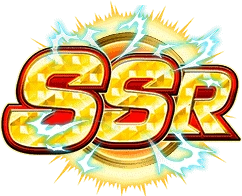 |
Special Super Rare |
Max level of 80, can be awakened into a UR |
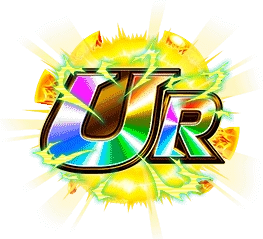 |
Ultra Rare |
Max level 100, can we awakened into a TUR
*Does not drop in Gacha, must be awakened |
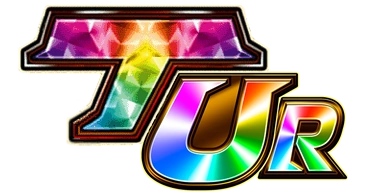 |
(Transcend)
Ultra Rare |
Max level 120, can be awakened into a LR using extremely rare event-driven currencies
*Does not drop in the Gacha |
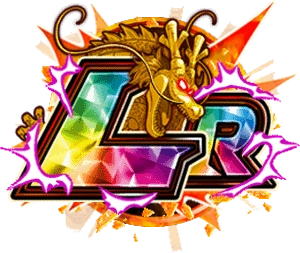 |
Legendary Rare |
Max level 150
Can only be 1 of 3 characters
+ a lot of rare event currencies
*Does not drop in the Gacha |
If you’ve played fire emblem heroes, this will seem very familiar. Dokkan was actually first released back in February 2015 and saw many of the similar growing pains that Fire Emblem Heroes is going through now. In particular, Dokkan has added additional tiers (UR, TUR, LR) on top of their initially launched tiers to extend the amount of time it takes to reach the optimal build of a character.
In Summary, Dokkan Battle is a well crafted Gacha-based game which focuses the player on building up a strong team of heroes. They’ve built a strong base which could be capitalised on using events.
#2 Driving Desire
So how did a game with a light RPG core play rocket up the top grossing charts? What was so special about this event?
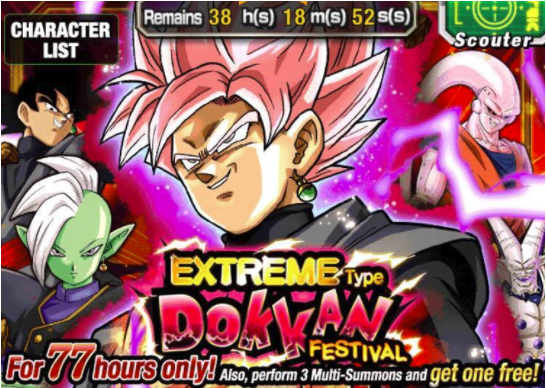
The event was a summoning festival. For 77 hours, players have the ability to summon 5 new heroes. Included in this set is 2 heroes which are very desirable: Super Saiyan God SS Vegito and Goku Black Rose. If you’re not a fan of the show: the show is about the protagonist Goku, who fights, gets beat up, powers up to a new form, the bad guy does the same, Goku gets beat up again, rinse, repeat, until eventually Goku wins (this can take many episodes). For those knowledgeable about the show’s storyline, you will also know Vegito and Goku Black are different but we will avoid going deep into the lore of the show here.
Regardless, the Dragon Ball Z IP has been revitalised in the last year, broadcasting in a new major TV show and building up a strong following once more. In particular, in the last months, this Vegito and Goku Rose have been significant new characters to the plot line. The fans of the series know these characters and are extremely excited about adding them to their team within Dokkan Battle.
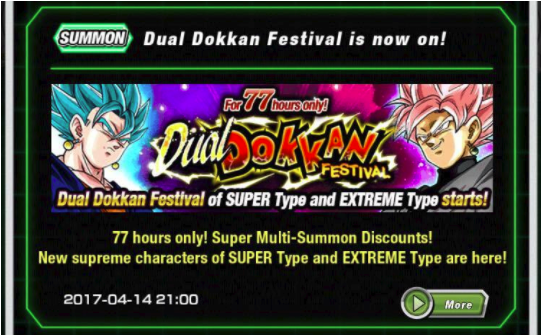
Besides watching the show, BANDAI NAMCO has been teasing these new characters joining the game for months. Teasing this content using the messaging within the game (seen above), social media, and their fan forums by showing silhouettes and teasing how valuable these characters will be.
Don’t underestimate the importance of proper community management and messaging with your live ops strategy. Building up anticipation & excitement is the key to driving high engagement in events.
Visually, these characters are just a recolouring of Goku and Vegito, but mechanically they shift the meta strategies of Dokkan Battle meaningfully. For one, these characters have a leader abilities which benefit a much wider array of characters (Vegito for SUPER type, Goku for EXTREME type) and these characters can deal insane amounts of damage (even having a chance to hit multiple times). For now, the fan base sees this as meta-shifting — not overpowered. It will be interesting to see how the audience reacts in the coming months to this meta-shift, and if BANDAI NAMCO can avoid the pay-to-win feeling in western markets. These characters were actually launched 6 months ago in the Japanese version of Dokkan Battle, which gave them some lead time to smoothen out the meta and avoid any negative meta changes in the process.
By combining these elements: a transparent time-limited window, clear tie-ins with the IP, and designing extremely desirable content, Dokkan Battle has created a recipe for their user base to be ravenous about collecting the event-driven content.
#3 Sales Design
But a strong gacha-based core and some desirable content aren’t going to drive you to the top grossing on its own. To drive top grossing games it is about properly capitalising on the demand for this content. Free to play games do this through the task of setting up and designing sales. In recent years this has become much more of an artform: finding the optimal messaging, timing, and cadence for sales so that it remains special to the audience, avoids cannibalization yet drives significant revenue.
Dokkan Battle clearly is being run by live op experts when they designed the Dokkan Festival Event.
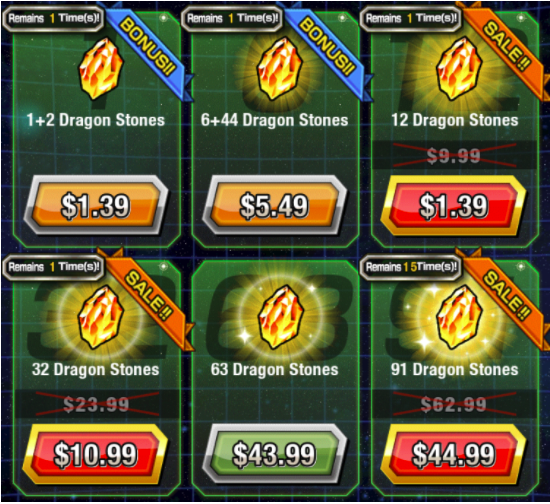
A week before the event even started, when it was only being teased to players, Dokkan Battle started offering premium currency at a significant discount in limited time windows. Players were offered sales of 50%+ off of currency packs in limited quantities. Unlike most F2P game sales, Dokkan also adds a quantity limit per sale — allowing them to offer these crazy discounts without fear of players abusing the price window. But during these sales, players stocked up on their summoning currency for the upcoming frenzy that would happen during the Dokkan festival event.
When the festival started, Dokkan Battle offered big discounts for players that would summon multiple times in a row:
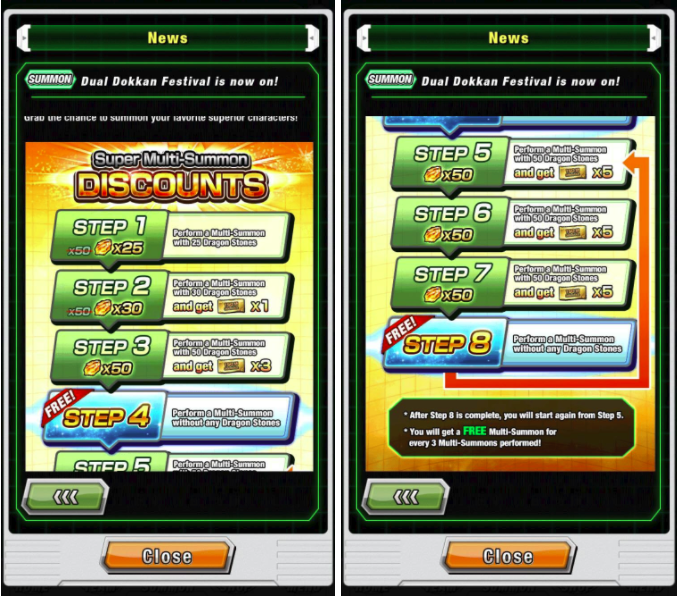
You can see here, that players would get initially 40-50% off the cost of a usual multi-summon, until reaching Step 4 which gave a free multi-summon. These were designed to get as many players deep into the sale as much as possible. Each Summoning type had their own step sales function — so you could get the 25/30/50 summon discounts first for Goku, and then again for Vegito. Players invested themselves in both sales to try to claim either top prize. After Step 4, players are given a free multi summon every 4th step, so any player in desperate pursuit of the unique content (and there was plenty) would attempt to take advantage of the “Buy 3 get 1 free” sale.
On top of this benefit, each purchased summon also came with 5 additional tickets which could be traded in for additional free summons (although these tickets did not have the unique content in their pool). Although this sales system is complex, it succeeded it pulling players into the pursuit of summoning as often as they could during the limited window for the content.
With these two systems, Bandai Namco capitalised on the limited time content. They utilised a strong premium currency sale surrounding the event to push players to convert early and take advantage of sales when they could, and they created an addictive savings system for continuing to summon. This drove players to continually spend and convert in pursuit of the rare content that was available at a bargain only this weekend.
Takeaway: Strong Core + Live Ops for the win
Dokkan Battle’s surge to the top grossing was actually many years in the making. Throughout the years of development, Bandai Namco built the base for what this event ultimately achieved.
- A strong monetizing core gameplay provided a basis for Dokkan Battle to build upon live events and extremely desirable content.
- Driving desire through leveraging the IP, effective messaging with players, and designing meta-shifting content.
- Sales design surrounding the event which pushed players to convert multiple times
In the coming weeks we will see if they can maintain their position. Was this event short-term focused, or can it propel Dokkan Battle into a staple in the top spots of the App Store? Regardless it is clear that Dokkan Battle is a finely tuned monetizing machine, that will be able to leverage their content and their audience many more times in the coming year.
Huge thanks to Matt Hood for this article! Without his knowledge of the deep systems in this game, I couldn’t have put this together.
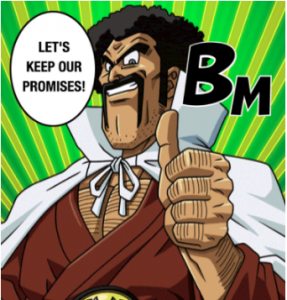
Games are content, and so the economics of games are largely the economics of content. Content is what players pay for, and content is what takes time and money to build, with both the quality and amount of content increasing production costs. I’ve been playing a lot of Dragon Age: Inquisition recently, and having a great time. I’ve already sunk just over 20 hours into it, and if friends and reviews are to be believed, I have at least another 30 to go before I finish the main storyline.
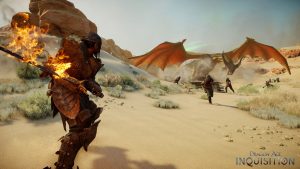
Dragon Age Inquisition has a huge amount of high quality content to explore
The world you can explore is vast, filled with scripted missions, side quests, wild beasts, roaming bandits and hidden secrets. Romping across the landscape from rocky deserts to dank marshes I am both awestruck at the variety and volume of content in the game, and slightly sickened by it. Sickened, because now I work in the industry I know how much time will have been invested into producing everything I see, and how countless days must have been put into dark corridors, rock formations and other mundane details that give the world authenticity, but will be largely forgotten and ignored by players.
Mobile is some way behind the production values of consoles. Partly the hardware isn’t as good yet, and so cannot support such high end graphics. Partly developers have not needed to deliver such high quality games to win customers. But mobile is rapidly catching up, and whilst the quality of content may not be as high, the amount of content needed is already probably larger. The F2P business model dominates mobile, and success here is highly dependent on retaining your players for months or even years. Having something for players to do a year after they start playing your game is no mean feat. Wooga’s hidden object game Pearl’s Peril has 90 weeks of content – something that few if any console games can match, and as a result of this the retention in the game is phenomenal.
Content is a key competitive angle
It’s clear on both console and mobile that the amount of content you can deliver, and its quality are key factors for success. It’s hard to imagine an RPG without the amount and quality of content that Skyrim or Dragon Age has being a success. For a competitive HOG you need to deliver a similar amount of content as in Pearl’s Peril – something that only one or two developers apart from Wooga can hope to do. One of the reasons that World of Warcraft has become so entrenched is the amount of content that it has built up over the past decade is now almost impossible for other MMOs to replicate.
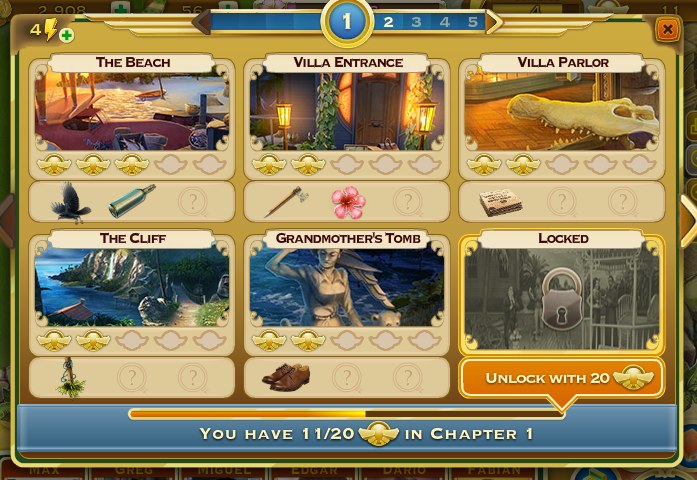
Pearl’s Peril has 90 weeks of content, each with 5 hidden object scenes and a point-and-click adventure scene
For many games the number of man-hours that have been put into content determines the production quality and amount, together with the efficiency that this time is converted into content, given the tools utilized. The older a genre is, the higher the production values are – by pushing the content bar ever higher, developers shut out competition and establish themselves in franchises for the long term. With each game developers up the stakes, both because they can due to improving tools and existing assets to start from, and because they must to continue attracting players.
Maximizing content
To be successful developers must therefore invest in their tools and production pipeline to match the incumbents in the genre they are going head-to-head with. Failure to do this sort of preparation can only result in failure. Indies and smaller developers that cannot match the content output of bigger companies must innovate on the gameplay mechanics more to succeed. By innovating they can produce a new experience that players will not directly compare with established games. No one compares Realm of the Mad God to World of Warcraft, or Faster than Light to Mass Effect. There are also a number of techniques that can be used to stretch content for as long as possible, and all developers, regardless of their content output are wise to use as many of these as possible.
Randomness: Games with randomness are far more playable than those without some element of randomness. In Candy Crush Saga, levels are different each time they are played due to the random way that gems drop into the board. Players replay levels effectively waiting for the right combination of gems to drop. Imagine the game without this randomness and each level has a solution that can be found by trial and error relatively quickly, and the levels become boring.
Alternative choices: Allowing players to customize their play experience in different ways allows them to go back and replay the same content to explore how their decisions influenced the game. Whilst this requires some additional content that not all players may see, it allows die hard fans to play through most of the same content several times with minor variations. A good example here is how Telltale games allow you to replay episodes making different decisions each time. These decisions allow you see how the other characters react and the story pans out. In Dishonored the skills you upgrade give you different ways to complete each level, and the amount of violence that you employ throughout the game affects the way the story pans out to give replayability significant appeal.
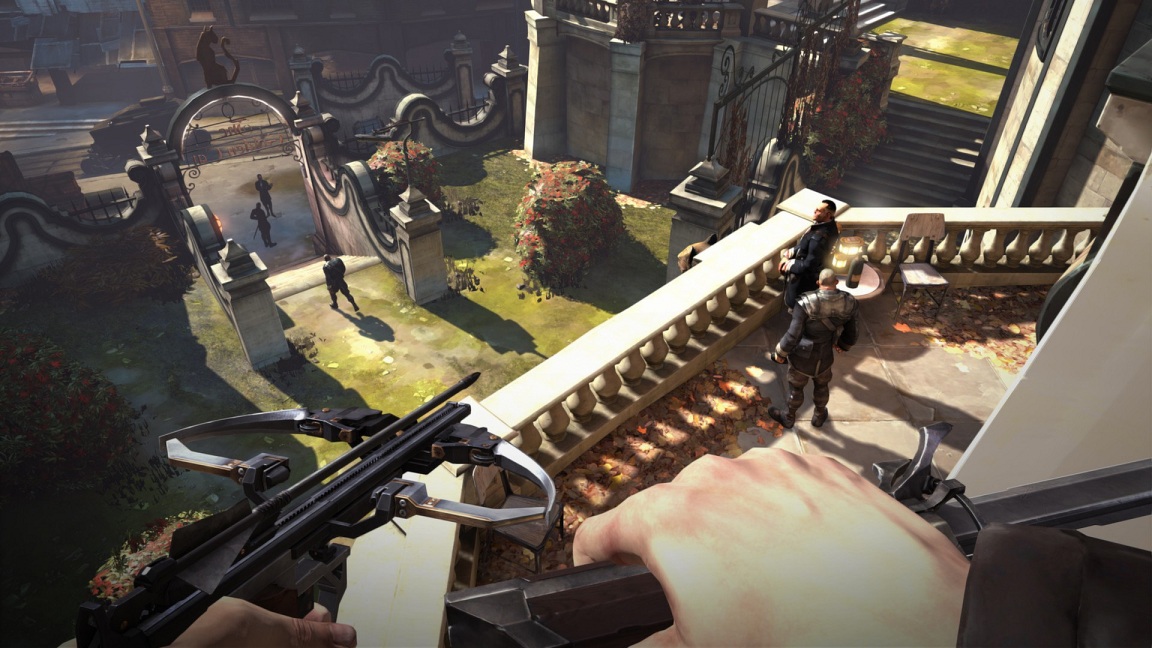
The way you play Dishonored affects how characters interact with you, the overall ending and even the weather in levels.
Events: Most successful mobile games run timed events of some form. Often the mechanics of the event are very similar, but the appearance of exclusive content that is only available for a limited period engages players extremely well. For the chance of getting a new unit, building or item players will happily grind through a lot of content that they have already seen before, and the most active players will often only be playing for the events schedule, having already exhausted the other content in the game.
Difficulty levels: In games where the difficulty of levels can be increased, then replaying the same content is fun because it requires players to master a higher skill threshold than before to complete. Changes in difficulty can often be made with config changes that are cheap to implement, and the players will still enjoy the content. Guitar Hero or Rock Band use this mechanic to allow you to replay the same tracks again and again at a level that is always challenging.
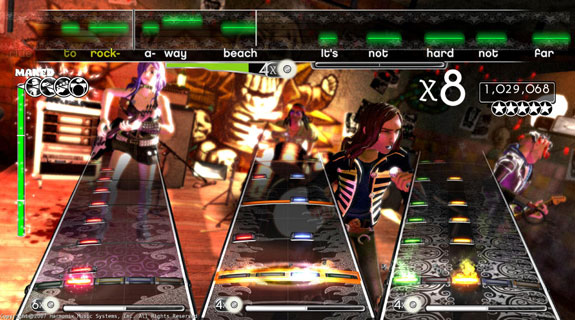
Rock Band lets you play through the same songs at several different difficulty levels
User Generated Content: In Clash of Clans, players spend most of their time attacking the bases of other players. As the layout of each base is set by the defending player then an incredible amount of variation is generated by the players. All Supercell needed to do was to give players the tools reason to vary their base layout and the players take care of the rest. Different bases require different tactics to attack and so even though additional buildings and units are released only very slowly, players stay engaged in the game.
Conclusion
In any genre, games compete on the amount of content offered and its quality, both of which drive up the cost of production. It is important to recognize the demands of producing this content before starting production and only choose genres where you can compete. Having chosen a genre it is vital that developers build the tools and pipeline to deliver the required content, as well stretch the playtime from their content however possible.






